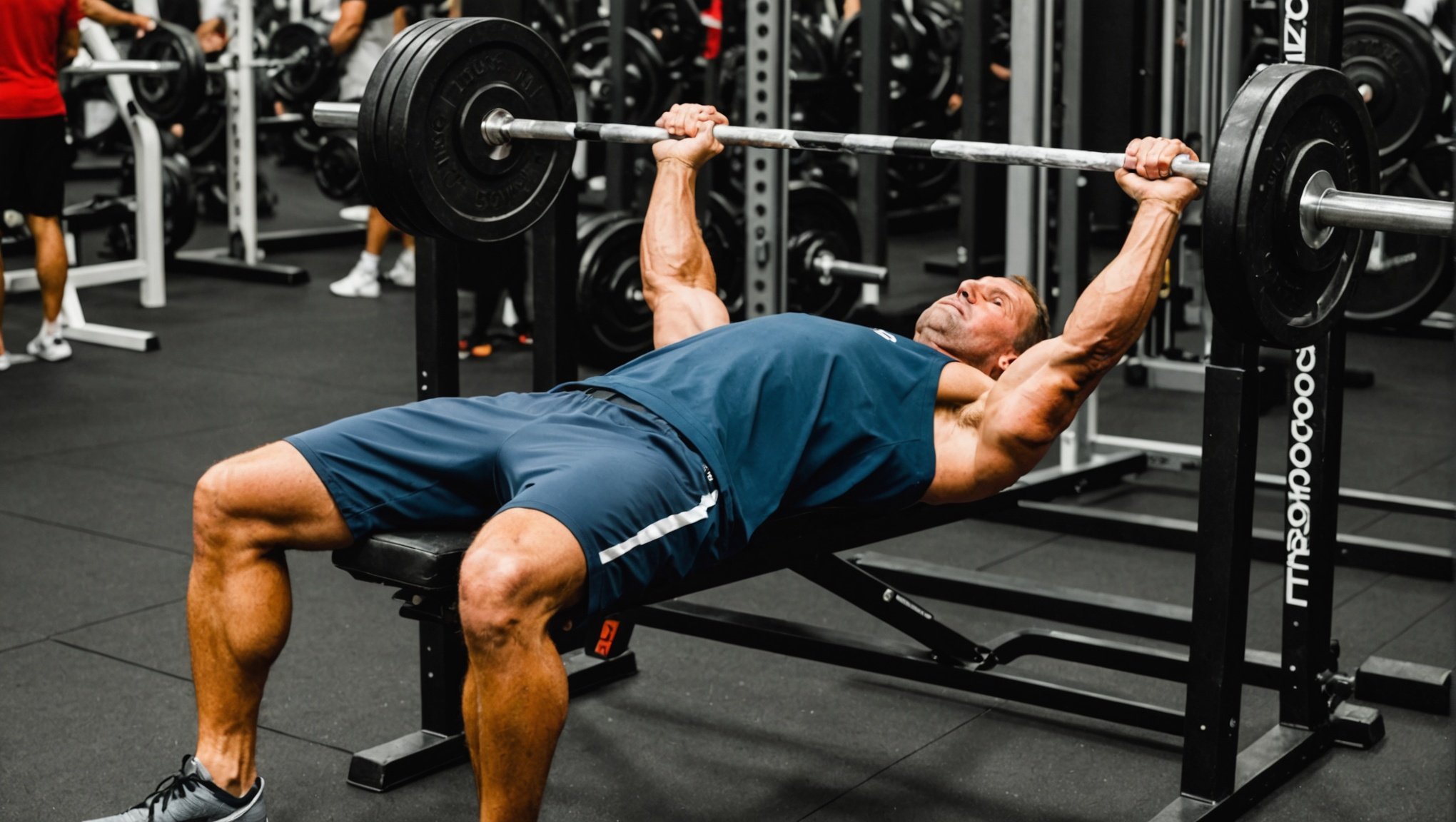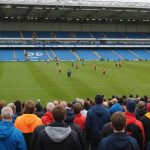In the realm of strength training, the perfect blend of warm-up routines coupled with precise exercises is a winning formula for enhanced performance. One such exercise that demands due diligence is the bench press, a quintessential element of any strength training regime. Good warm-up routines not only prime your body for the exercise ahead but also serve to mitigate the risk of injury. However, the question remains: what are the most effective warm-up routines that could augment your bench press performance? This article will delve into this pressing issue, outlining a few warm-up routines that will set the stage for a successful bench press workout.
The role of warm-ups in strength training
Before diving into the specifics of warm-up routines, it’s important to understand the role they play in strength training. A well-executed warm-up routine can help to elevate your body temperature, increase mobility, prime your nervous system, and mentally prepare you for the hard work ahead. This preparation phase is not to be overlooked, as it is a vital step towards better performance at the bench press.
In parallel : Which type of foam rolling technique offers the best post-workout muscle relaxation?
A warm-up routine that has been meticulously planned and executed will result in an increase in muscle temperature. This phenomenon is beneficial because it makes your muscles more pliable, thereby reducing the risk of injuries such as strains or tears. Moreover, the increased blood flow delivers more oxygen and nutrients to your muscles, leading to better performance.
Dynamic stretches: a perfect warm-up for bench press
When it comes to the bench press, dynamic stretches make for an excellent warm-up routine. Not to be confused with static stretches, where you stretch a muscle to its full length and hold it there, dynamic stretches involve moving parts of your body and gradually increasing reach, speed of movement, and/or the weight you’re moving.
This might interest you : How does the manipulation of training volume affect muscle hypertrophy in advanced lifters?
A good rule of thumb is to start your warm-up routine with a five-minute cardio exercise. This could be anything from a brisk walk on the treadmill to jumping rope. The goal here is to increase your heart rate and get your blood flowing. Following this, you can then transition into dynamic stretches that target the main muscle groups used in a bench press: the chest, triceps, and shoulders.
Light weight sets for priming the muscles
Another effective warm-up routine to enhance your bench press performance involves performing light weight sets of the exercise. This is the next step after dynamic stretching and serves to prepare your muscles for the heavier weights they will be lifting during your workout.
Start by using a weight that is around 50% of your one-rep max, and perform a set of 10 to 12 reps. This initial set is to get your muscles accustomed to the movement pattern of the bench press. Gradually increase the weight with each subsequent set while decreasing the number of reps. This gradual progression will ensure your muscles are primed and ready for the main part of your workout.
The importance of mobility exercises
Mobility exercises play a crucial role in preparing your body for the bench press. They help in improving the range of motion in your joints, which is particularly important for the bench press as this exercise involves a significant amount of shoulder mobility.
Performing shoulder mobility exercises like arm circles, shoulder rolls, and band pull-aparts can help in loosening up your shoulder joints. Additionally, thoracic mobility exercises can help in improving your bench press form and performance. These could include thoracic extensions and rotations. Bear in mind that maintaining proper form during these exercises is key to reap the benefits and avoid injury.
Incorporating activation exercises in your warm-up routine
Activation exercises, often overlooked, are a vital component of a good warm-up routine. These exercises target the stabilizing muscles that play supporting roles during a bench press. By activating these muscles, you are ensuring that your body moves efficiently during the exercise.
For the bench press, performing activation exercises that target the rotator cuff, such as the external rotation, can be beneficial. These exercises serve to stabilize your shoulder joint, which is crucial when performing heavy lifts.
As you can see, a well-rounded warm-up routine can drastically improve your bench press performance. It is the perfect blend of dynamic stretches, light weight sets, mobility exercises, and activation exercises that will prepare your body for the task ahead. Remember, every good workout begins with a good warm-up. So take your time, don’t rush through it, and your bench press performance will thank you for it.
Understanding the Impact of Continuous Training Load
Balancing your training load is key to optimizing your bench press performance. While it’s crucial to push your limits and progressively overload your muscles, it’s also important not to overdo it. Overtraining can have detrimental effects on your performance and can increase the risk of injury.
To maintain a balanced training load, it’s advisable to gradually increase the intensity and volume of your training session over time. This approach, known as progressive overload, ensures that your muscles are constantly challenged, encouraging growth and strength development.
A typical strength training session for bench press will involve multiple sets (usually 3-5) of a certain number of reps, depending on your training goal. For strength gain, lower rep ranges (1-5) with heavier weights are recommended. For muscle growth, moderate rep ranges (6-12) with medium weights are ideal. A well-structured program will have a mix of these to target different aspects of fitness.
A warm set is a crucial part of this mix. A warm set is essentially a lighter version of your work set, performed before you move on to the heavier weights. Its purpose is to prepare your body and nervous system for the working weight. A typical warm set could involve 2-3 sets of 10-12 reps with around 50% of your work set weight.
Incorporating a warm set in your training session not only primes your body for the work set but also contributes to your overall training load without overtaxing your body. This is because a warm set is not as physically demanding as a work set but still contributes to the cumulative training load.
The Critical Role of Full Body Warm Routine and Cool Down
In the context of a bench press workout, a full body warm routine is not only beneficial but necessary. This is because the bench press is a compound movement that involves multiple muscles and joints, including your chest, triceps, shoulders, and even your back and legs for stability. Therefore, a warm-up routine that covers the entire body will ensure that all the necessary muscles and joints are sufficiently warmed up and ready for the exercise.
A full body warm routine typically starts with a general warm-up, such as a 5-10 minute cardio session to elevate your body temperature and increase your heart rate. This is followed by dynamic stretching for mobility, activation exercises for muscle engagement, and light weight sets to prime the nervous system.
Once your workout is complete, it’s equally important to cool down properly. A cool-down phase allows your heart rate and body temperature to return to normal gradually. This can be achieved by performing light cardio followed by static stretching. Static stretching after a training session can help improve flexibility, promote recovery, and reduce muscle stiffness.
To conclude, it’s evident that a well-executed warm-up routine and a proper cool-down phase can significantly enhance your bench press performance. Your warm-up routine should ideally be a blend of dynamic stretches, light weight sets, mobility exercises, and activation exercises. Similarly, a structured cool-down phase is just as important to ensure recovery and readiness for future workouts. Remember, every good training session begins with a good warm-up and ends with a good cool-down. So take your time, don’t rush through it, and your bench press performance will thank you for it.













